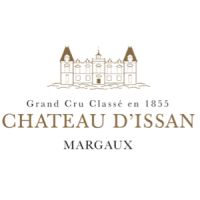About Chateau d'Issan
Chateau d’Issan has changed hands over generations, contributing to the reputation of the estate and the castle. During the twelfth century, it was known as La Mothe-Cantenac. The estate changed hands over the years, ending in the hands of the ‘Essenault family in 1575, whose successive generations gave the estate its present name. The estate was owned by the Foix de Candale, who abandoned it after the Revolution. In 1824, the estate was controlled by Jean-Baptiste Duluc, who improved the estate vineyards before the Blanchy family took over. In 1866, Gustave Roy owned the estate, built the first gravity-fed cellars, and replanted the phylloxera-affected vineyards.
Since 1945, the estate and the vineyard are under the control of the Cruse family. They were joined in 2012 by Françoise and Jacky Lorenzetti, who are owners of Château Pedesclaux in Pauillac and the Château Lilian Ladouys in Saint-Estèphe.
The wines from Chateau d’Issan was famous even before the 1855 classification that earned it the distinction of the 3rd Grand Cru Classé. The wines were served during the marriage of Henry Plantagenet, the future King of England, in 1152. The vineyards of the Issan is constantly taken care of to ensure the grapes attain optimum maturity. All measures are taken to give adequate respect for each vineyard and get the best out of each fruit. Médoc type pruning is carried out in the winter based on an intimate knowledge of the vines and future production regulation.
Ploughing is carried out in spring the traditional way- creating air and water circulation to ensure better natural resumption of soil activity. Phytosanitary treatments are carried out as needed to protect plants from fungi, bacteria and viruses. This is followed by suckering and splitting to ripen the fruit branches, followed by green harvest and leaf stripping to concentrate the bunches. Harvesting is carried out manually through double selective sorting.
Once the harvested grapes reach the vat, they are sorted twice, first on bunches and then on a vibrating table. The sorted grapes are lowered into separate vats. The vinification takes place in 37 stainless steel tanks, with capacities between 70 and 200 hectolitres.
Buy Chateau d'Issan wine below.





